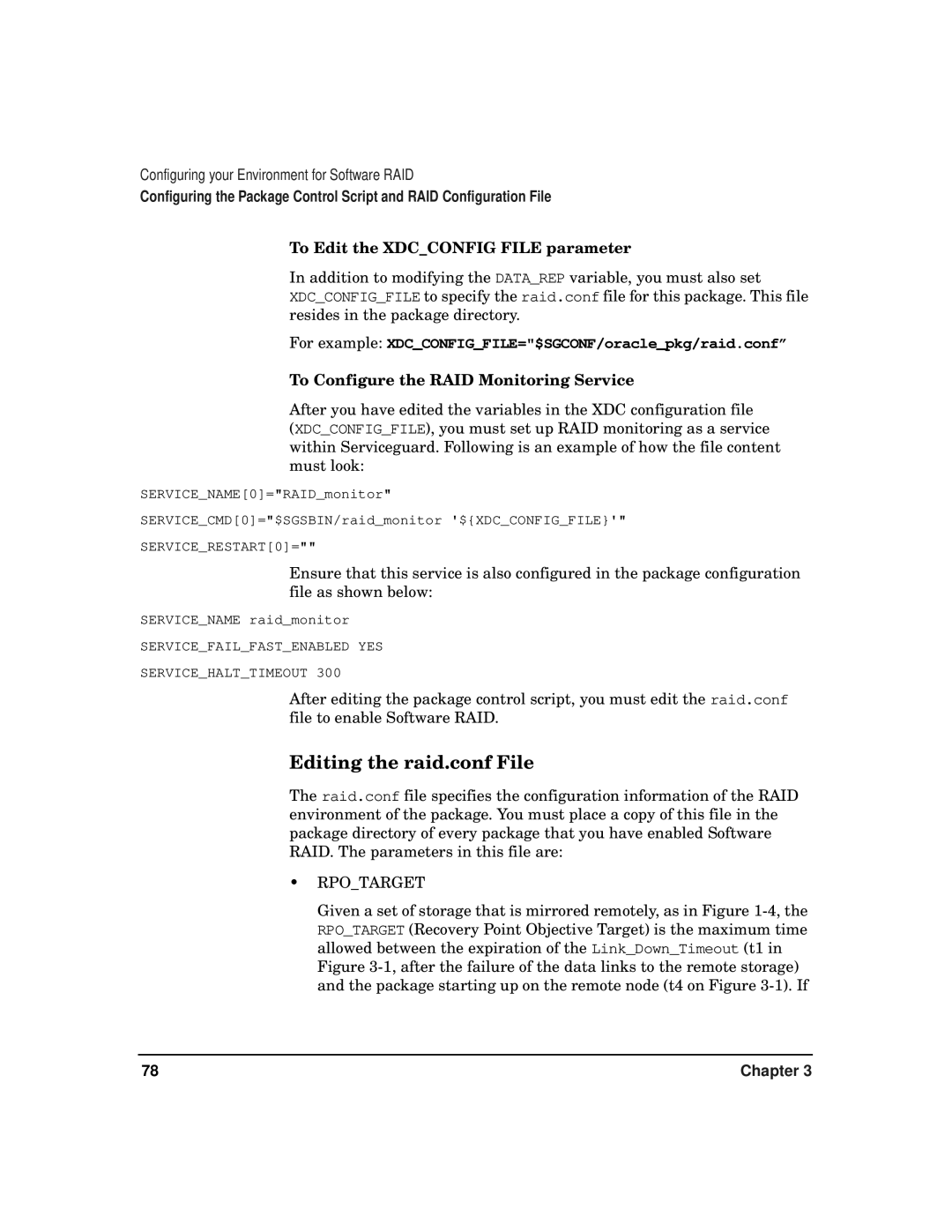Configuring your Environment for Software RAID
Configuring the Package Control Script and RAID Configuration File
To Edit the XDC_CONFIG FILE parameter
In addition to modifying the DATA_REP variable, you must also set
XDC_CONFIG_FILE to specify the raid.conf file for this package. This file resides in the package directory.
For example: XDC_CONFIG_FILE="$SGCONF/oracle_pkg/raid.conf”
To Configure the RAID Monitoring Service
After you have edited the variables in the XDC configuration file
(XDC_CONFIG_FILE), you must set up RAID monitoring as a service within Serviceguard. Following is an example of how the file content must look:
SERVICE_NAME[0]="RAID_monitor"
SERVICE_CMD[0]="$SGSBIN/raid_monitor '${XDC_CONFIG_FILE}'"
SERVICE_RESTART[0]=""
Ensure that this service is also configured in the package configuration file as shown below:
SERVICE_NAME raid_monitor
SERVICE_FAIL_FAST_ENABLED YES
SERVICE_HALT_TIMEOUT 300
After editing the package control script, you must edit the raid.conf file to enable Software RAID.
Editing the raid.conf File
The raid.conf file specifies the configuration information of the RAID environment of the package. You must place a copy of this file in the package directory of every package that you have enabled Software RAID. The parameters in this file are:
•RPO_TARGET
Given a set of storage that is mirrored remotely, as in Figure
78 | Chapter 3 |
